
Manufacturer's Specifications:
Frequency Response: 25 Hz to 17 kHz, to 19 kHz with CrO2 tape, to 21 kHz with metal tape.
Signal/Noise Ratio: 65 dBA. Separation: 33 dB.
Crosstalk: Down 63 dB.
Erasure: 65 dB.
Input Sensitivity: Mike, 0.25 mV; line, 60 mV.
Output Level: Line, 700 mV; headphone, 150 mV at 8 ohms.
Flutter: 0.03% wtd. rms.
Wind Times: 120 seconds for C-60.
Dimensions: 17-5/16 in. (440 mm) W x 5 5/8 in. (143 mm) H x 14 5/8 in. (371 mm) D.
Weight: 21.6 lbs. (9.7 kg).
Price: $1,000.00.
Company Address: 20600 Nordhoff St., Chatsworth, Cal. 91311, USA.
The Vector Research VCX-800 cassette deck offers the major features of most premium-priced decks (such as Dolby B and C, remaining tape-time counter, and tape calibration facilities) plus a few small but exclusive features of definite interest.
One of the major features is the VCX-800's microprocessor-controlled "Compucounter." Press a light-touch button to set it for your tape's length (C-45, C-60 or C-90) and a few seconds after starting play or record from any point on the tape, it will display remaining tape time in fluorescent digits.
If the user forgets to enter the tape length, the Compucounter will light a "Correct" LED and set itself. Where timing is not needed, pressing "C-90" and "Lock" gives an uncalibrated time readout.
The Compucounter has two tape-position memories which can be set with the "Save 1" and "Save 2" buttons during play or record, or set to any tape time with the 10-digit keypad when the transport is stopped. The display shows each entry as it is being made, and the "Save" entries can be displayed at any time by pressing "Memory Read." Pressing "Search" winds the tape to the first memory position, then returns to whichever mode (play or stop) the deck was in when it was pressed. The auto rewind and play buttons can set up combinations of automatic rewinding, stopping or playing, as desired, including continuous cycling between the two memory locations. These start and stop entries can be removed with a push of the "Save Clear" button. The scheme is convenient and flexible.
Light-touch rectangular buttons control the transport functions, with LED status indicators for all except "Stop." Pressing the "Record" button puts the deck in record-pause mode; recording begins when "Pause" is pushed. Flying-start recording is not possible: Pushing "Record" while holding down "Play" still just puts the deck into record-pause mode.
A push of "Record Mute" records four seconds of silence on the tape, then puts the deck in record-pause mode; holding the button down lengthens the muting period-a good scheme.
The row of push-in/push-out switches at the bottom center of the front panel include the "Monitor" ("Source/Tape") and five noise-reduction controls. The latter include "NR In/Out," "Dolby NR B/C," "Dolby System FM In/Out" (for decoding FM broadcasts from an external tuner or receiver), "Dolby System NR-HX In/Out" and "MPX Filter In/Out." The switches are logically interlocked: When "Dolby System FM" is pressed, the "Dolby NR B/C" selector is automatically set to Dolby B, since no station broadcasts with Dolby C. When "Dolby System NR-HX" is engaged, the Dolby FM circuit is defeated to prepare the deck for recording. This happens regardless of the physical switch settings-good human engineering.
The three-position ("Fe/Co/Metal") rotary tape-select switch has a large bar knob. The input and output level controls have good-size knobs, with friction coupling between the two sections of the former. The horizontal bar-graph meters have 20 segments for each channel (orange up to zero and red above) and a switchable peak-hold function with settings for "Auto" (held for a second or so) and "Manual" (held until released or exceeded). Further left is the test section, with center-detented " Rec Cal" and "Bias Adjust" trim pots. "Test In" inserts a 400-Hz tone into the left channel and a 400-Hz to 15-kHz swept sine wave into the right channel. " Rec Cal" is adjusted for zero indication with the "Monitor" switch in "Tape" position, and bias is adjusted for flat response over the range of the sweep (also indicated at zero, although actual test levels are lower). A "Test Monitor" switch allows feeding the test signals out through the line out and headphone jacks. A bright red indicator between the bar graphs reminds the user when test mode is being used. The combination makes for an excellent tape-to-deck matching scheme.
Also on the front panel are the mike phone jacks (left only, for mono), the headphone jack, and, to the left of the cassette compartment, the power and timer switches and the eject button. On the back panel are the line in/out phono jacks, the Dolby FM calibration pots, sockets for an optional remote control and for control by the timer in the Vector Research VRX-9500 receiver, and a fuse-holder. (The receiver also has dbx encoding and decoding.). The VCX-800 showed a number of fairly large p.c. boards, with very good to excellent soldering. Many of the interconnections were made with multi-pin plugs, though some wirewrap and direct soldering were also used. Adjustments were labeled, as were all components with the exception of the resistors (so, read the color coding). The drive ran very quietly, and the two-motor, dual-capstan design was quite impressive.
The power transformer was large, and there were two fuses in clips. The chassis construction was rugged and rigid.
Measurements:
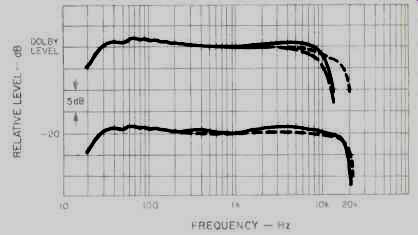
Fig. 1--Record-playback responses using Maxell UD-XL I tape with Dolby C
NR (solid line), with HX added (short dash), and without NR (long dash).
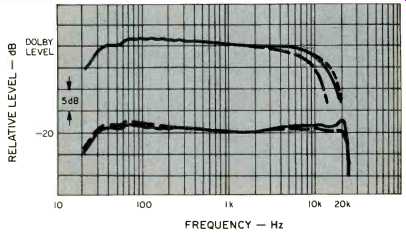
Fig. 2--Record-playback responses using TDK SA tape with Dolby C NR (solid
line), with HX added (short dash), and without NR (long dash).
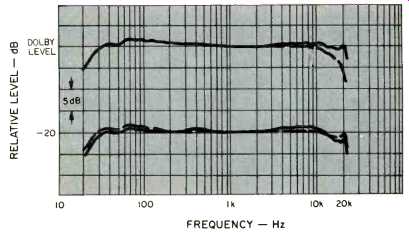
Fig. 3--Record-playback responses using Memorex Metal IV tape with Dolby
C NR (solid line), with HX added (short dash), and without NR (long dash).
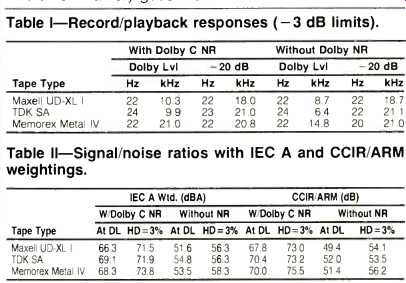
Table I--Record/playback responses (-3 dB limits).
Table II--Signal/noise ratios with IEC A and CCIR ARM weightings.
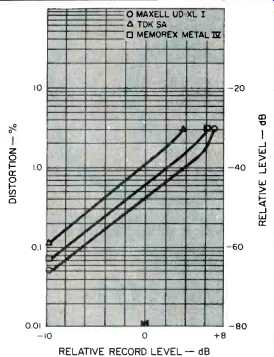
Fig. 4--Third-harmonic distortion vs. level at 315 Hz with Dolby C noise
reduction.
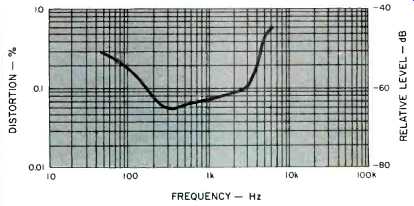
Fig. 5--Third-harmonic distortion vs. frequency with Dolby C NR, at 10 dB
below Dolby level, using Memorex Metal IV tape.
The playback responses were excellent at both equalizations, with most points within less than a dB of flat. Playback level indications were correct within the resolution of the meter segments. Reference tapes for the deck were TDK AD, SA and MA, but excellent results were obtained from many tapes with the aid of the " Rec Cal" and "Bias Adjust" trim pots. Each tape was set up using the built-in test scheme. Dolby tracking could be checked by switching Dolby NR in and out. Mistracking was indicated by any large level variations in the right-channel (swept sine wave) signal after initial setup without NR. Maxell UD-XL I, TDK SA and Memorex Metal IV were selected for the testing to follow, but BASF Professional I Super, Maxell UD-XL II-S and TDK MA could have been chosen just as well.
Figures 1 to 3 show the record/playback responses with the three tapes selected, at Dolby level and 20 dB below that, both with and without Dolby C NR. Headroom extension (HX) NR was also added for the Dolby level tests with Maxell UD-XL I and TDK SA. All of the responses were very good, and the Dolby tracking was generally excellent, as shown. Dolby HX was most effective with the Type I tape, but there was some improvement with SA also. All of the responses had a rise of 1 to 2 dB around 70 Hz. The measured 3 dB down points are listed in Table I; as expected, the best of the good results go with the metal tape. The built-in 400-Hz (419-Hz actual) test oscillator used for record calibration had less than 0.3% distortion, much less than most such built-in sources. Sweep range was actually from 526 Hz to 14.5 kHz, plenty close enough to the nominal 400-Hz/15-kHz specification. The " Rec Cal" pot had a range of-8 to +6.5 dB with UD-XL I tape. The bias trim pot could set the response at 10 kHz anywhere from -4.5 to +3 dB relative to that at the detent position. Tests showed these pots could match the great majority of tapes.
With a 10-kHz test tone, there was 20° phase discrepancy between tracks and a total of 20° jitter, better than most decks. The multiplex filter was 3 dB down at 15.9 kHz and a good 32.5 dB down at 19.00 kHz. There was no bias observed in the output in record mode. At 1 kHz, separation was a good 40 dB, and crosstalk was down more than 83 dB, an outstanding figure. Erasure of metal tape at 100 Hz was 64 dB-a very good result.
The third-harmonic distortion was measured at 315 Hz in Dolby C mode for all three tapes, from 10 dB below Dolby level to the points where HDL3 = 3% (Fig. 4). The figures for metal tape were certainly very good, and those for UD-XL I were even better. For Memorex Metal IV, HDL3 vs. frequency was determined from 50 Hz to 6 kHz at-10 dB (Fig. 5). The distortion is quite low in the mid-band, with the expected rises at the frequency extremes.
The signal-to-noise ratios were checked with both IEC A and CCIR/ARM weightings, with and without Dolby C NR and with reference to both Dolby level and the 3% distortion points. The results in Table II demonstrate quite clearly the lower noise benefits of Dolby C NR, with excellent ratios for all three tapes.
The input sensitivities were 0.13 mV for mike and 44 mV for line, both notably lower (more sensitive) than specification. The overload points were at 25 mV for mike and 6.9 V for line, high enough for normal usage. The input-level pot sections tracked within a dB for about 45 dB down from maximum, fairly good. The input impedance was close to 90 kilohms over most of the band, falling to a very acceptable 25 kilohms at 20 kHz. Output clipping appeared at a level equivalent to + 14.3 dB relative to meter zero. The line output was within the meter-segment resolution of the 700-mV specification. It fell to about 630 mV with a 10-kilohm load, indicative of the 1-kilohm output impedance. The multi-detented input and output pots had "steps" of 1 to 1.5 dB but were actually continuous and could be set at in-between points. The output polarity was the same as the input in "Source," but it was reversed in playback.
The bar-graph meters were faster than VU types, requiring close to 100 mS duration of the test-tone burst for zero indication. The decay time for 20 dB was about 300 mS, making a reasonable combination with the fairly fast response. The-3 dB response points were at 24 Hz and 21 kHz. Meter calibration was accurate above "-10" and below "+5," but beyond those levels the errors were a dB or greater. For example, "-20" was at-17 dB, and "+8" was at +6.2 dB actual, but the important near-zero thresholds were all accurate. Up to zero, the segments were orange and a somewhat dull red above that; meter reading was easier in dimmer light. It should be noted that the regular maximum indications were held: There was no faster-than-normal response with peak hold.
Playback of a 3-kHz tone recorded at 120 V line power showed no variation in speed (frequency) with the power supply anywhere from 110 to 130 V. Flutter checks over the length of a cassette revealed consistent performance at every point, with figures of 0.04% wtd. rms and 0.068% wtd. peak. The wtd. rms result was slightly above specification, but the results are excellent just the same, and another cassette might very well have given lower figures. Speed variations over a period of time were less than 0.03%. Wind times averaged 115 seconds, better than specification, but much longer than most decks. Run-out to stop, changing wind direction, or going from wind to play all took a second or less. There was a wait of approximately two seconds after insertion of a cassette before the VCX-800 would initiate any mode. That was caused by the worthwhile loose-loop takeup system, which always did its thing first.
Use and Listening Tests
Vector Research provides instructions in two forms: A 14-page manual and a two-page hard-paper operation reference guide that is very handy for keeping next to the deck.
The manual has good text, including the maintenance instructions, and very good diagrams on various auto-wind/ play actions. There are several detailed schematics covering all of the circuit cards.
Tape loading/unloading was easy and direct. Access for maintenance tasks was fairly good, but definitely improved when the door cover was removed. All of the controls and switches were completely reliable throughout the testing.
Interchannel level adjustments were a bit fussy because of the high friction, which would have been less of a problem if the knobs were knurled. Different features of the deck kept showing their conveniences. The readout of remaining time was one of the most helpful for this user. The test scheme worked very well, and adjustments could be made within a few seconds to match most tapes and to ensure good Dolby tracking. Metering was easy in general, and "Peak Hold" was of obvious benefit. No record or pause noises were detected: There were low-level stop clunks, heard in tape noise (with Dolby C).
The listening tests included pink noise and high-quality discs such as Umbrella's "Big Band Jazz" with Rob McConnell and the Boss Brass. There was excellent Dolby tracking in all cases, with only the very slightest subtle shifts at times.
With some of the sources, there was some improvement when HX was added. Dolby C showed its definite low-noise superiority in quiet portions of the best discs. A slight emphasis could be noted in the bass on a number of occasions, but the playback was still very close to the original.
The VCX-800 would not be the best choice for someone who records just miscellaneous pop selections and likes to play them in a specific order. This deck does not have a selection program scheme, and its wind times are on the high side. However, the unit is most worthy of comparison to other decks in its price range: It offers excellent performance in general, an accurate and convenient remaining-time readout, an excellent test matching system, and other automatic features-to say nothing of Dolby B and C, as well as HX and FM Dolby decoding.
-------Howard A. Roberson
(Source: Audio magazine, Jan. 1983)
= = = =
Also see:
Vector Research VCX-600 Stereo Cassette Deck (Dec. 1980)